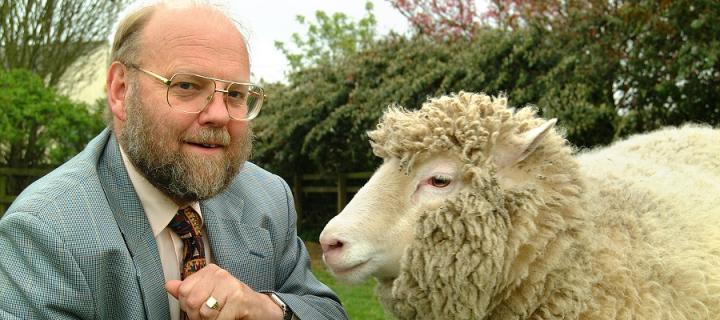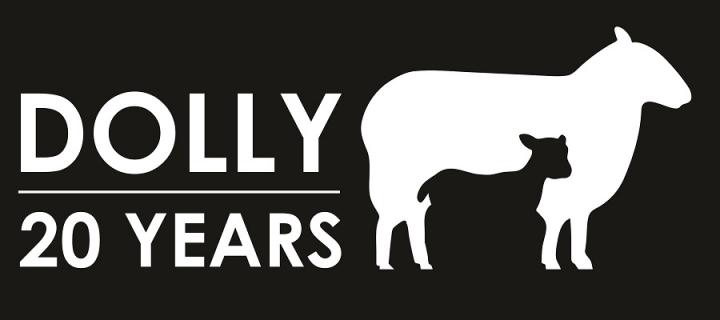Sir Ian Wilmut and redirecting cell fate
Twenty years after the creation of Dolly the Sheep, Sir Ian Wilmut is working on the 'reprogramming' of cells.
What are you currently working on?

A group of us are trying to understand the mechanisms by which cells can be changed directly from one cell type to another by the process known as “reprogramming”. The aim is to improve the efficiency and accuracy of the procedure and so improve the quality of cells available for use in therapy.
What do you hope will come out of your research?
Every year, millions of people succumb to degenerative diseases such as Parkinson’s disease, motor neuron disease, different forms of blindness and heart failure. These all reflect the death or loss of normal function of specific populations of cells. At present, there is no effective treatment of any of these conditions. The hope and expectation is that cell therapy using cells produced in tissue culture will offer suitable treatments for many of these conditions.
How did you get here?
I studied agriculture at the University of Nottingham with the initial aim of working in Agricultural Extension services in the developing counties of the world. However, while at Nottingham, my first experience of laboratory research made me realise that this was much more interesting and I changed courses. Later I had the opportunity of an internship lasting 2 months with Professor EJ ”Chris” Polge in Cambridge during my last vacation as an undergraduate. Later he offered me a post graduate scholarship to study the “Deep freeze preservation of boar semen”. During a subsequent post doc with Chris, we produced the first calves from frozen embryos.

From Cambridge I moved to the Agricultural Research Council Institute concerned with livestock breeding and genetics, which is now known as The Roslin Institute. It is now part of the University of Edinburgh. Our initial research was concerned with understanding the causes of prenatal mortality in livestock. Our research suggested that this mortality is caused by physiological and environmental variation. A hypothesis which unfortunately it is not practicable to test adequately.
Tracey and Dolly
Our expertise in recovering and transferring embryos was next put to good use in a project to introduce human genes into sheep to induce them to produce a human protein in their milk that might be used to treat human disease. The project was successful and for a number of years Tracey, the first sheep to produce significant quantities of human protein, was the most famous sheep in the world.
While the procedure of injecting a few hundred copies of the gene being transferred into a nucleus in the early embryo was effective, it was inefficient. Only some of the injected embryos developed to become fertile adults in which the transferred gene functioned appropriately. Furthermore, it was only able to add genes but for many purposes the need was to be able to make precise changes in a gene in an animal.
It was with this latter objective in mind that we set out to develop methods of nuclear transfer. The expectation was that if we could obtain live offspring by transfer of nuclei from an embryo or animal, it would be possible to introduce precise genetic changes in these cells before transfer. This would produce offspring that are identical to the donor of the cell except for the precise change. This was achieved by understanding the factors that influence development of cloned embryos. In addition, our new cloning procedure proved to be more effective than initially expected and the first clone of an adult animal - Dolly the sheep - was born 20 years ago.
The birth of Dolly revealed that the mechanisms that regulate differentiation to form specialised adult cells are not so rigidly fixed that they cannot be changed. This was a startling revelation after the previous century of research which failed to find any evidence of plasticity in adult cells. We, along with many other laboratories, started to look in cytoplasm of embryo stem cells for the active factors that are ble to bring about these changes. We permeabilised the membranes of human somatic cells and introduced murine ES cell extract through the temporary pores. This caused some changes in expression of key genes (OCT4, SOX2, KLF4), but not sufficient to cause a permanent change in the cells. Other researchers were effective in reprogramming mouse and human cells to become stem cells by the introduction of key transcription factors. This method of producing induced pluripotent stem cells (IPSC) makes it possible to derive such cells from selected donors. These IPSCs can be used to study the molecular basis of inherited diseases if the cells are donated by a patient with an inherited case of a degenerative disease. This new understanding can then be used to devise reporter systems able to compare potential medicines. Promising molecules must then be compared in animals before they can be considered for assessment in patients. Inevitably this all takes several years.

Ten years after the birth of Dolly I became the founder Director of the MRC Centre for Regenerative Medicine in the University of Edinburgh, a position that I held until my retirement. The aim of that Centre was to bring together in a collaborative environment basic stem cell biologists in the Science faculty (initially led by Professor Austin Smith) with clinicians in the medical school who are interested in using stem cells in their research or therapy. This group moved into a purpose designed facility in 2012. It includes world class research laboratories, animal rooms and tissue culture facilities that have been used to derive clinical grade human ES cell lines. The building is on the Medical School campus and less than 100 metres from a world class 900 bed research hospital which also includes a clinic trials unit.
Who are you collaborating with?
I was a founder of a collaborative group that used this approach to study motor neurone disease. Other members included Chris Shaw of Kings, London, Tom Maniatis of Harvard, Steve Finkbeiner of San Francisco, as well as Giles Hardingham and Siddharthan Chandran of Edinburgh.
I am also a member of a working party to develop a global network of organisations that are producing clinical grade iPS cells from donors who are homozygous at major HLA antigens. This should make it possible to provide 150 lines which would offer a useful a partial match for more than 90% of the UK population.
Other members include Marc Turner of Edinburgh, Alan Trounson of Melbourne, Susan Solomon of New York, Craig Taylor of Addenbrookes, Marc Pechanski of INSERM
Tell us something about you that might surprise us.
I think that I have been interviewed so many times that there are no surprises left.
Related links
Read up on the life of Dolly on The Roslin Institute website

